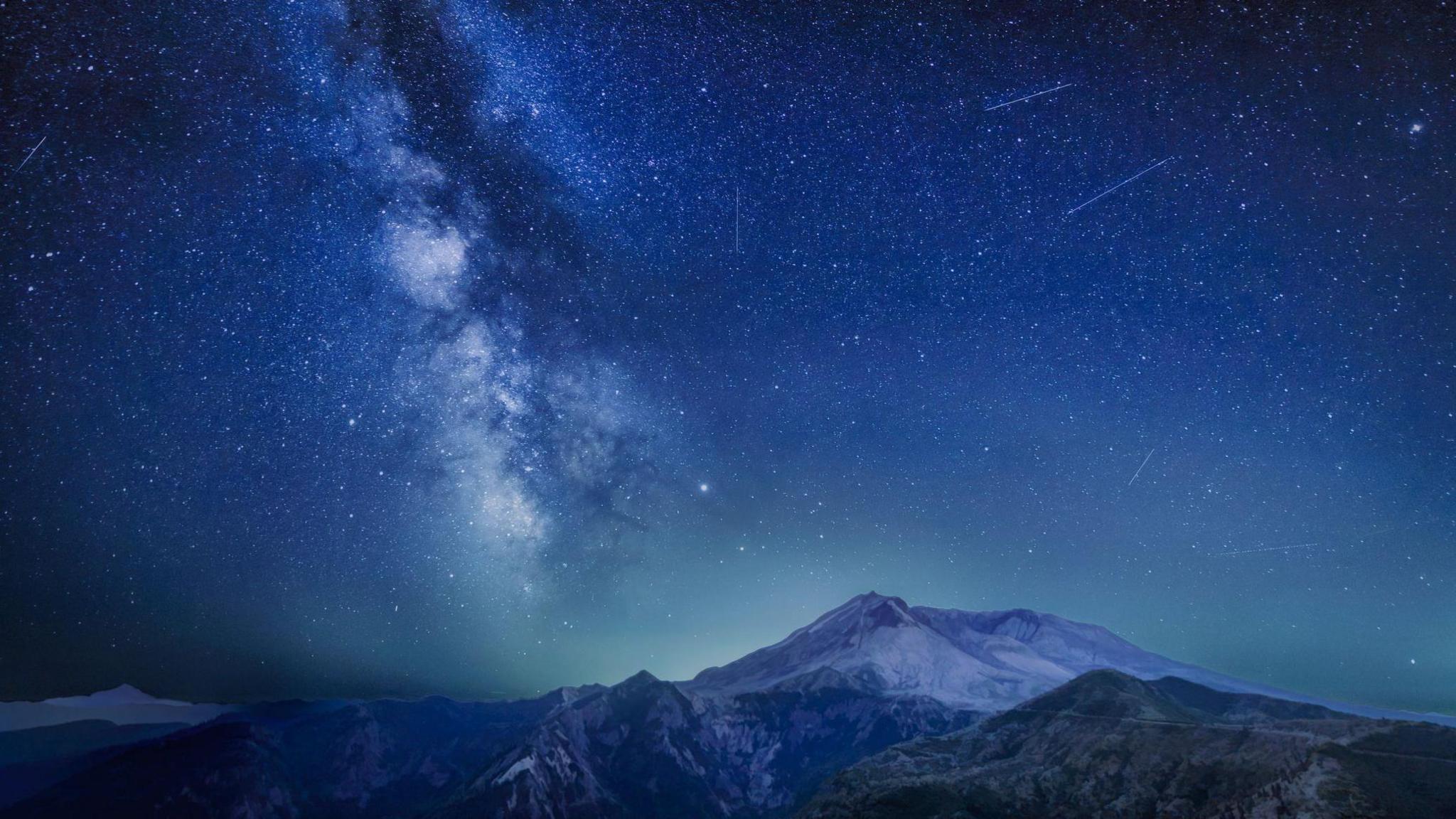Delta Aquariids meteor shower to light up the night sky

- Published
A spectacular meteor shower is likely to be visible in the early hours of Tuesday morning as the Delta Aquariids light up the sky.
The meteor shower is named after the constellation Aquarius and the bright star Delta Aquarii which it appears to travel from.
Stargazers with the right conditions should be able to see up to 25 meteors an hour at it's peak which should be between midnight and dawn.
Meteors, meteorites, asteroids and comets - what's the difference?
- Published13 February 2023
Meteorite from early solar system found in Antarctica
- Published31 January 2023
Check out pictures of this year's BIGGEST meteor shower!
- Published15 August 2023
What are meteors?

Meteors are pieces of rock which range in size from a grain of sand to miles wide.
When they are still in space, they are called meteoroids but when they enter the Earth's atmosphere they start to burn leaving a trail of light and become meteors.
If there is a huge number all at once this is called a meteor shower.
Annual meteor showers occurs when a comet passes near the sun and bits of rock get loose as the ice melts.
If any rock lands on Earth it is called a meteorite.
What's the best way of seeing a meteor shower?

The meteor shower should be visible to the naked eye if looking at an area of night sky with little or no light pollution.
Light pollution means any artificial light so switch off any outdoor lights
It's better to look up without a telescope or binoculars so a wider expanse can be seen.
Stargazers should avoid looking at their phone instead letting their eyes get used to the dark.
